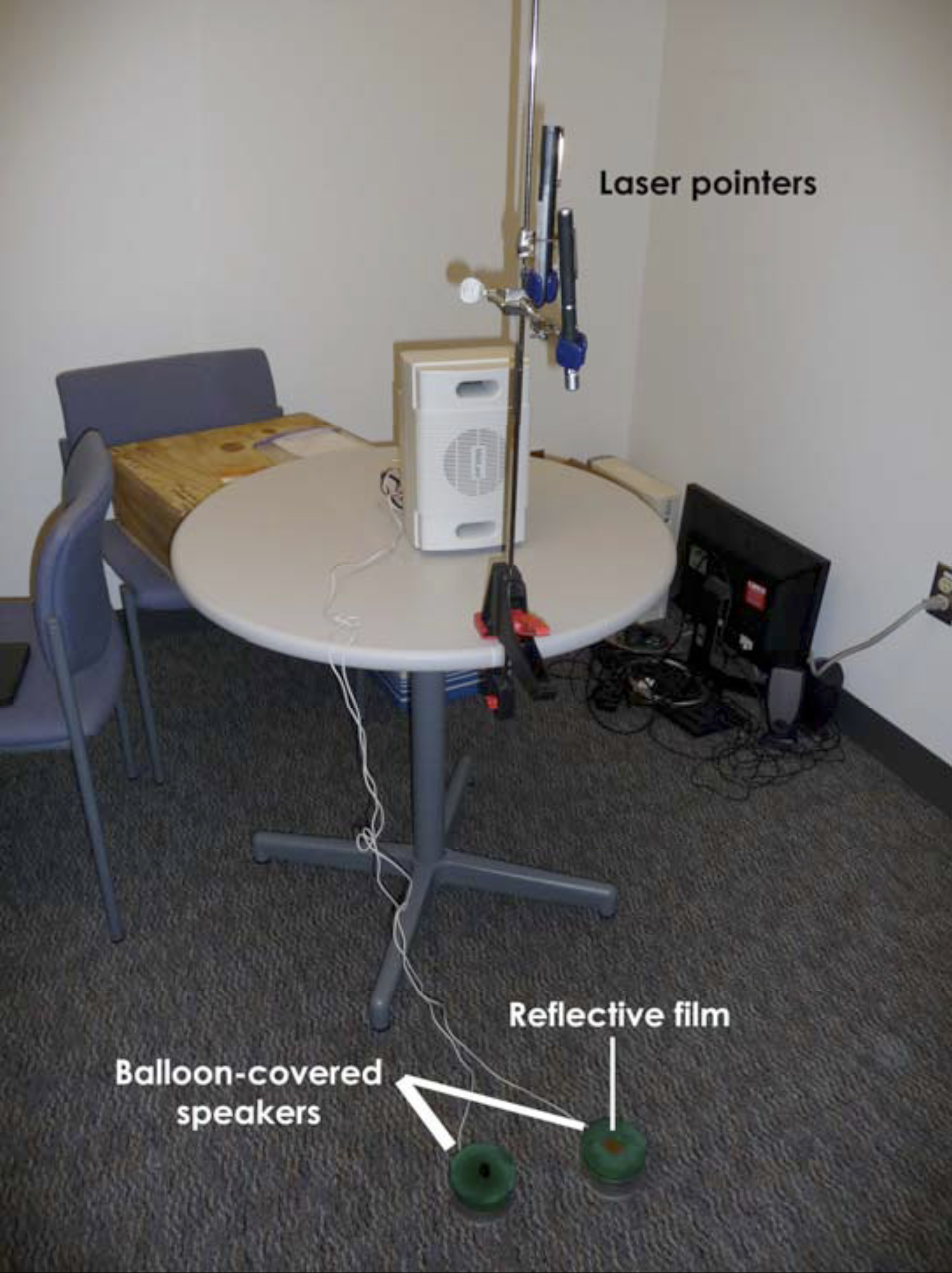Can You See Sound?
April 01, 2010 Filed in:
Demo CornerBonnie Lasby, Physical and Engineering Science Dean’s Office University of Guelph
blasby@uoguelph.ca
This demonstration is a nice way to show that sound is vibration of molecules. The picture below shows the equipment required for this demonstration. The setup consists of an amplifier attached to an input device (laptop, iPod, mp3 player, etc) and a set of small speakers (described below) as well as a bar clamp and red and green laser pointers.




Two small speakers are mounted inside plexiglass tubes so that there is space above and below the speaker. A groove is etched around the outside of the tube about 1 cm from the top of the tube. Latex balloons with the ends cut off are stretched across the top of the plexiglass tube. The balloons can be held in place by stretching the balloon past the groove and then wrapping elastic bands around the tube in the groove. A reflective film is attached to the balloon in the center of the speaker. I use gold-coated mylar film as tin-foil diffuses the light too much. You can try using a small piece of a CD or mirror. The speakers are set on the floor and plugged into an amplifier that has some input device attached. I use an iPod but you can also ask students to use their own input device with their favourite music. A bar clamp is attached to the table or bench with the amplifier. Laser pointers are attached to the bar clamp so that the green laser shines on the reflective film on one speaker while the red laser shines on the reflective film on the other speaker.
I ask students what sound is and initiate a discussion about sound, as well as how and where sound waves travel. I have them put their ear against a desk and knock lightly on the desk so that they realize that they can feel as well as hear sound. I then ask them if they can see sound and if they want me to demonstrate the ability to see sound. I dim the room lights and then turn on the iPod and amplifier. As the speaker emits the sound waves, the vibrating air molecules cause the balloon to vibrate which in turn moves the reflective film. The laser beam, which is reflected from the film onto the ceiling, moves with the music. To reinforce that the movement of the laser beam is due to the sound waves, I change the volume. As the volume increases, so does the movement of the laser beam.
Column Editor: Ernie McFarland, Physics Department, University of Guelph, Guelph, Ontario, N1G 2W1 Tags: Waves and Sound


